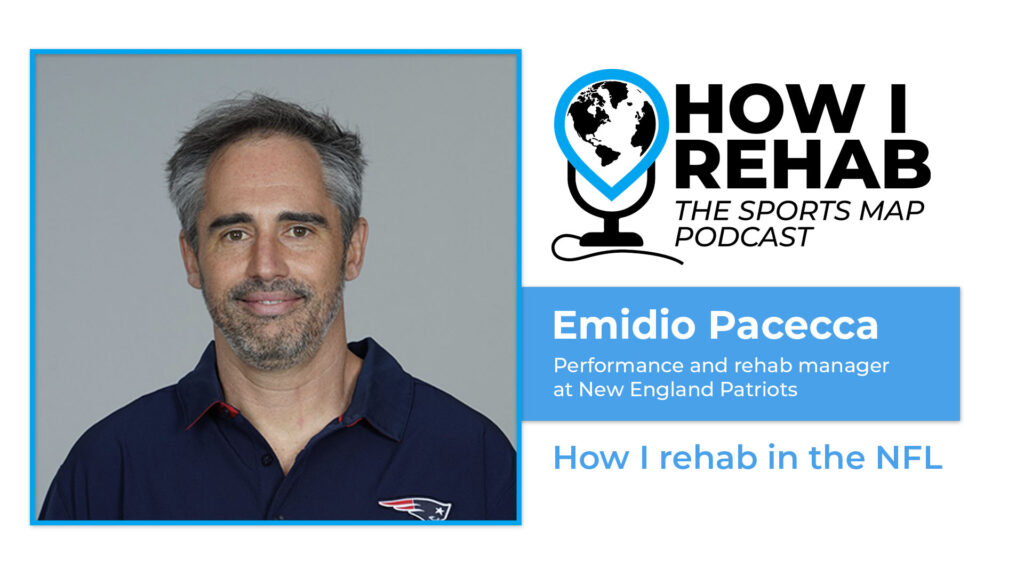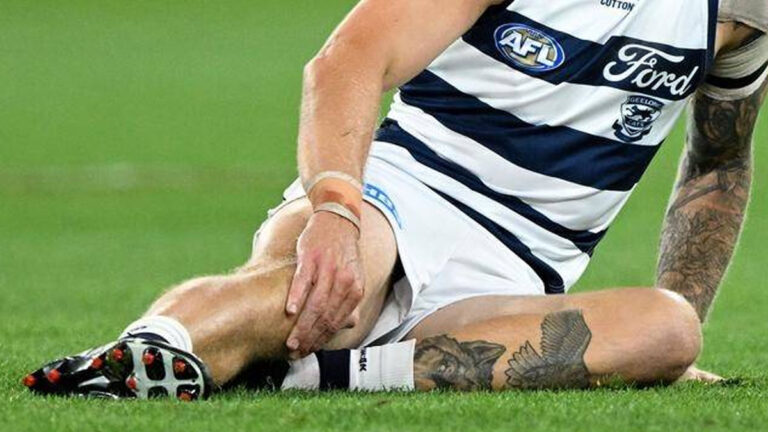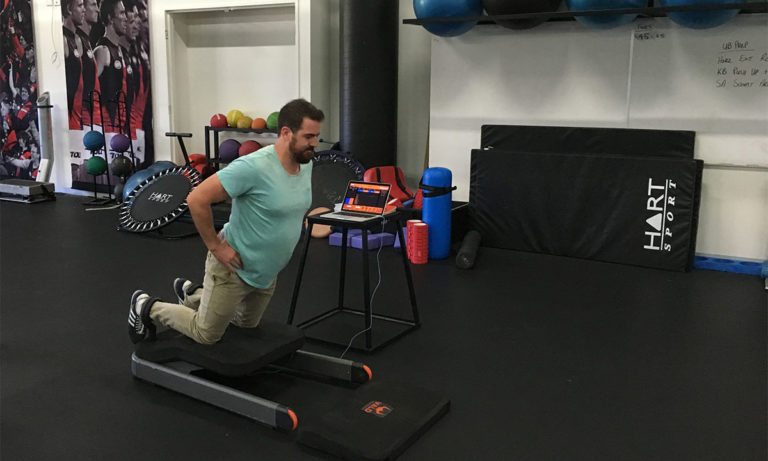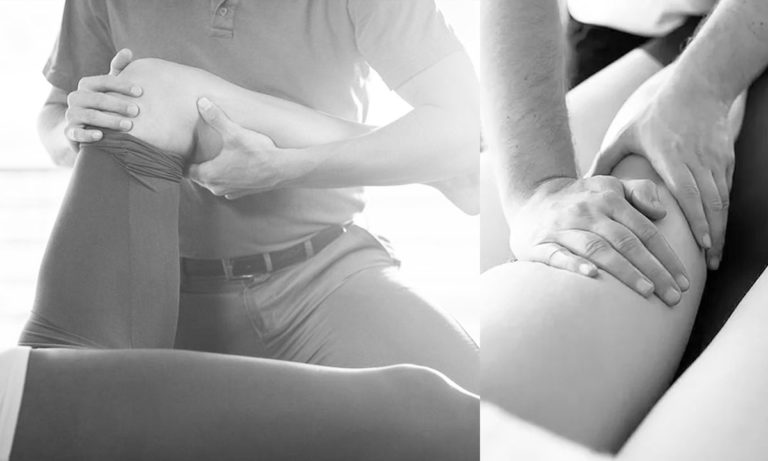Emidio Pacecca – How I Rehab in the NFL

Recent Posts
Emidio Pacecca, Performance and Rehab manager at New England Patriots was recently on the How I Rehab Podcast with Sports MAP founder Nick Kane.
Emidio gave listeners amazing insights into the high demands on NFL athletes. Some great takeaways are below.
Key Stats:
- 30% of achilles ruptures in the NFL and NBA don’t return to professional sport.
- 43% of patella tendon ruptures fail to return to the highest level.
High Speed Running:
NFL athletes can be conditioned to running >90% max velocity up to a 100 times per week. Additionally, exposure can be 4-5 days per week at speeds >95% max velocity. Highlights what can be possible when athletes have been exposed to these numbers for many years in college football and/or athletics.
Chronic Loads:
Must maintain chronic exposure to their key lifts throughout off-season periods. This typically involves low level isometrics, heavy strength work and ballistic exercises.
Must Have Exercises:
For injury prevention and performance, his four most important exercises are:
- Squat
- Nordic
- Calf based exercise (seated or standing)
- Copenhagen
Tendon Protocol:
5 x 45” long time under tension for pain management. Coupled with 5 x 3 heavy slow eccentrics.
Additionally, using Scot Morrison’s proposed cluster sets of 3-8” holds with a total time under tension of 1-2 minutes cumulatively (link of article below)
Use these cluster sets interspersed within heavy strength days and on alternate days to the longer 45” isometrics for pain.
Strength:
Goal is sled push x2 bodyweight for 15 yards for x10 reps
Limited research in groups >100kg for calf strength so must be cautious when applying group wide strength goals as x3 bodyweight standing calf is very different for a 60kg athlete (180kg) vs a 150kg NFL player (450kg)
A 5% loss of strength for an offensive lineman who weighs 150kg is very significant. Asymmetries with certain players or positions can be incredibly detrimental.
Strength Endurance:
Stair climbing at 80 beats per minute working up to 180 bpm. Building toward x10 sets of stadium climbs (380 steps).
Communication:
If you’re struggling to build trust, leverage players that you have had good outcomes with to act as mediators. Encourage these athletes to recount their personal successes and talk to other athletes to build buy-in and trust in large programs.
General Advice:
Speak to colleagues from different sports about their injury management techniques. Can easily be a victim of doing what everyone else around you are doing if you only speak to your colleagues that work in that sport.


